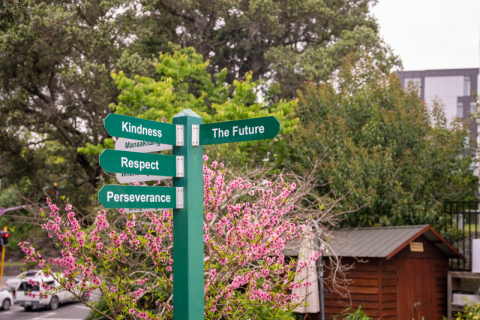
While the aggregated 2021 responses to the Teaching, School and Principal Leadership Practices (TSP) survey remain largely in line with the aggregated 2017 responses, the latest report from Cathy Wylie and David Coblentz poses some important questions for change in our schools.
A voluntary tool for schools to enhance their own practice, the aggregate TSP report survey gives a reasonable (but not fully representative) picture of Aotearoa schools. The report breaks down each of the three areas of practice (teacher, school, principal leadership) and includes a section which explores the differences between primary and secondary schools.
Based on last year’s responses, Rangahau Mātauranga o Aotearoa / NZ Council for Educational Research found:
- Nearly no change in teacher ratings of their own practices
- Small – but interesting – changes in teacher and principal ratings of some school practices
- Steady, marked changes in ratings of principal leadership
- Marked changes in ratings of Kāhui Ako experiences
Teaching practice findings
While there was minimal change from 2017 to 2021 in terms of teaching practice ratings, the primary-secondary differences bear repeating from our previous aggregate report.
Notably, primary teachers gave higher ratings than their secondary counterparts when asked about:
- Using flexible groupings to meet ākonga needs (38% primary, 20% secondary)
- Working with parents/whānau to support collective learning (28% primary, 14% secondary)
- Taking responsibility for the wellbeing of all students they teach (73% primary, 60% secondary)
School practice findings
The 2021 aggregate report found upward and downward changes in positive responses about school practice when compared to 2017.
Inquiry activity is on the rise, with 41% of respondents strongly feeling their school used inquiry to make worthwhile changes to teaching and student learning. Similarly, 48% of respondents strongly agreed that everyone in the school was engaged in some form of inquiry.
However, there was a decrease from 53% to 43% of strongly positive teacher responses when asked if their school utilised a range of evidence as to why students struggle with their learning.
Another area of distinct change is the professional community domain, which saw a decrease in positive responses on three items. As Wylie and Coblentz note, this may be a reflection of the COVID-19 pandemic more than anything else.
Related reading: Learning during lockdown (2021 pūrongo)
Principal leadership findings
Across the board, 2021 responses around principal leadership were higher than their 2017 counterparts, with most increases sitting between 6 and 9 percentage points.
Wylie and Coblentz suggest this is driven by the increased number of tumuaki who had been at their school for more than three years as of the 2021 survey, as well as the high focus on wellbeing and community outreach in the face of the COVID-19 pandemic.
Most schools belong to a Kāhui Ako that connects individual schools. Teachers and principals in 2021 were much more positive than in 2017 about the gains they were experiencing from involvement in a Kāhui Ako.
The rate of change remains slow
A smaller study of schools who had used the TSP survey tool consistently over a three-year period found increases in many teaching practice ratings, but such increases were not reflected at the aggregate level.
While responses were consistent between 2017 and 2021, Wylie and Coblentz argue that precursor changes at a national scale may be required to see improvements in ratings of practice at the aggregate level. They note that any policy shifts in expectations at the student level must be accompanied by matching support for the effective practices that positively affect student outcomes.
The full TSP Survey Aggregate Picture is available now through both the NZ Council for Educational Research and the TSP Survey website. The 2022 survey tool is currently closed, but will reopen for Term 2 and 3 in 2023.





Add new comment